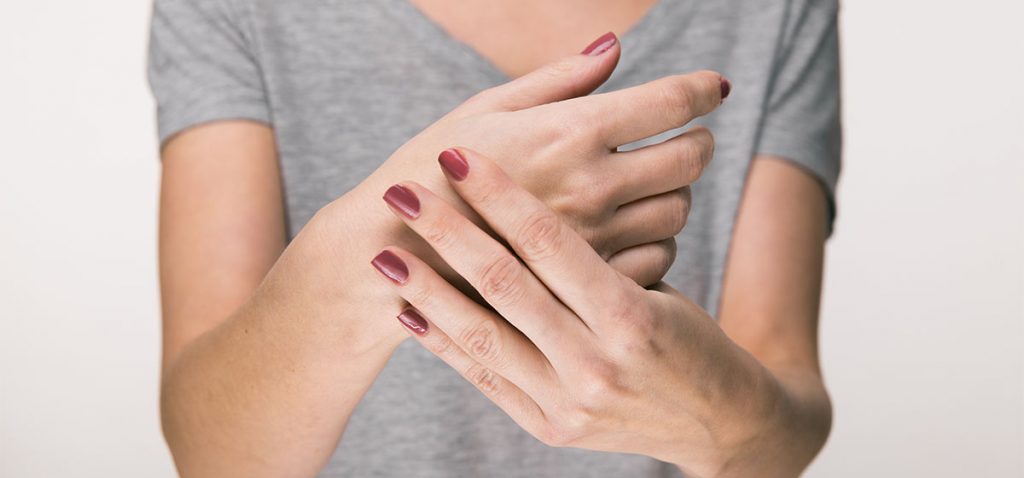What is Parkinson’s Disease?
Parkinson’s disease involves a depletion of dopamine-containing neurons in the substantia nigra of the basal ganglia in the brain. The classical features of Parkinson’s disease include resting tremor, rigidity, bradykinesia (slowness) and postural instability. This cluster of symptoms is referred to as Parkinsonism syndrome, which can be caused by other neurodegenerative disorders, cerebrovascular disease and certain drugs. The fourth characteristic is pain. That’s where massage therapy can help manage the condition.
Parkinson’s disease is named after James Parkinson, an English physician who described the Shaking Palsy in 1817.
Statistics on Parkinson’s Disease
The incidence and prevalence of Parkinson’s disease is uniform throughout the world. It generally commences in middle or late life, affecting 1-2 per 1,000 of the general population, and up to 2 per 100 people over 65 years but the incidence of younger and younger sufferers is increasing. Parkinson’s disease affects all ethnic groups. Males and females are equally affected. Approximately 78,000 Australians are affected by Parkinson’s disease.
Risk Factors for Parkinson’s Disease
The cause of Parkinson’s disease is unknown. Many cases are described as idiopathic or sporadic Parkinson’s disease (meaning they occur quite randomly in patients with no known predisposing factors). However, certain risk factors have been identified:
- Non-smokers – Studies have shown Parkinson’s disease to be less prevalent in tobacco smokers than in non-smokers.
- Herbicides such as methylphenyltetrahydropyridine (MPTP) may be associated with Parkinson’s disease.
- Encephalitis lethargica – Survivors of this disease develop severe Parkinsonism.
- Genetic factors – Some families will have multiple cases of early-onset Parkinson’s, but the majority of cases are non-familial.
Parkinsonism (the syndrome of rigidity, slowness and tremor) can be induced by drugs (reserpine, phenothiazines), and is seen in neurodegeneration, arteriosclerosis, carbon dioxide poisoning, Wilson’s disease, multi-system atrophy, communicating hydrocephalus and progressive supranuclear palsy (another illness causing rigidity and problems with eye movements and speech). Drinking moderate amounts of coffee, smoking, using non-steroidal anti-inflammatory drugs (NSAIDs) and oestrogen replacement in postmenopausal women (HRT) may actually reduce your incidence of Parkinson’s disease.
Progression of Parkinson’s Disease
Parkinson’s disease does not affect everyone the same way. In some people the disease progresses quickly, in others it does not. Although some people become severely disabled, others experience only minor motor disruptions. Tremor is the major symptom for some patients, while for others tremor is only a minor complaint and different symptoms are more troublesome.
Symptoms of Parkinson’s Disease
Parkinson’s disease can have a variable onset. The typical first symptom is a tremor in one of the hands. You may also notice clumsiness in some of your movements. Over time you may notice your movements becoming slower and more rigid, and you have increasing difficulty walking.
The common symptoms of Parkinson’s include:
- Tremor: Typically worse during stress and absent or reduced during sleep.
- Aching stiff joints and limbs.
- Difficulty with fine movements.
- Bradykinesia: You may have difficulty in initiating movement (e.g. starting to walk or rising from a chair).
- Dribbling saliva, dysphagia (difficulty swallowing), constipation and depression. In the later stages, you may develop dementia and personality changes.
- Pain, especially in the back.
How is Parkinson’s Disease Diagnosed?
Diagnosis of Parkinson’s disease is largely clinical, so in typical cases no investigations will be ordered. However, if your presentation shows atypical features (early onset, bilateral symptoms at onset, lack of tremor, etc), your doctor may order additional tests to exclude other causes of the symptoms. This may include CT scans, MRIs, PET scans or copper studies as appropriate.
Prognosis of Parkinson’s Disease
There is no cure for Parkinson’s disease. Initially treatment can produce good symptom control; however, the disease gradually progresses over 10-15 years, and death results from infection in most cases. Occasionally the patient may live for several decades after the onset of the disease. To date, no treatment has been found to reliably alter the prognosis of Parkinson’s disease,
How is Parkinson’s Disease Treated?
Although no medications will alter the course of Parkinson’s disease, they can give effective symptomatic relief. Medications should only be used when they are necessary, as their effect declines over time, even with increased doses, and they also produce unwanted side effects.
A wide range of drugs are currently available for treating Parkinson’s disease. Many of these are types of dopamine replacement therapy, which replaces the deficient dopamine within the substantia nigra in the brain.
Levodopa is the best treatment for Parkinson’s disease and is often used in combination with a peripheral decarboxylase inhibitor (L-dopa plus carbidopa, or L-dopa plus benserazide). This combination reduces the dose of L-dopa required, and thus reduces peripheral side effects.
Other treatments:
- Bromocriptine: A dopamine agonist. There are also other dopamine agonists, but their role is uncertain (caberfoline, rapinirole).
- Selegiline: A type-B monoamine oxidase inhibitor that inhibits dopamine catabolism in the brain.
- Amantadine: Increases synthesis and release of dopamine and has a weak antiparkinsonian effect.
- Anticholinergic drugs: Will reduce tremor but have little effect on bradykinesia.
Your doctor will decide which medications are best for you based on your age and particular symptoms. In young patients, levodopa therapy is often delayed and patients are started on dopamine agonists. This is because effects of levodopa wear off over time, while dopamine agonists are effective and have fewer motor fluctuations. If you are older than 70 you may be commenced on levodopa medications straight away.
Depression frequently occurs with Parkinson’s disease, but it is generally recommended to avoid antidepressant medications as they can worsen symptoms. In particular, certain drugs called monoamine oxidase inhibitors (MAOIs) are contraindicated in patients receiving levodopa drugs.
Some surgical options are available for Parkinson’s disease, such as deep brain stimulation. These have shown promise for patients with advanced disease with motor fluctuations. However, they are still largely experimental and very expensive.
You client will also have input from a variety of multidisciplinary services, such as occupational therapy, speech pathology, physiotherapy, dietetics, social work and counselling. These services will help to overcome some of the particular problems encountered with Parkinson’s disease in your daily life. Unfortunately, massage therapy is rarely recommended.
MASSAGE
Your treatment will depend on the characteristics presented by your client.
Points to address
- Is your client able to lie prone? Many cannot as it is too suffocating and uncomfortable.
- Use a seated massage table if your client finds it hard to get on to your table, or use a low profile hydraulic table.
- Have water present with a bendable straw. Some clients get very dry and dehydrated due to the PD medication and will appreciate a drink of water but,
- Make sure they do not choke on the water given. This can be one of the problems of PD due to the slow swallowing movement.
- Keep your clinic warm and comfortable.
- ‘Exhaust’ muscles where possible prior to massage therapy.
- Work on the PD patient’s feet, especially the great toe. If walking is a problem then this will be very helpful.
- Be light-hearted, listen, and have some good jokes up your sleeve!
- Focus areas will be back and shoulders (particularly if they display a stooped posture
- Ensure that the client takes their medication an hour before seeing you for their massage.
- Make yourself familiar with some of the prompts used to initiate walking and the tips such as ‘no laces for shoes (Velcro only) and t-shirts, not buttons.
- Give your PD plenty of time to undress and dress and keep them warm during treatment.
- ½ hr treatments are usually enough at any one time.

Stooped posture and paucity of movement

